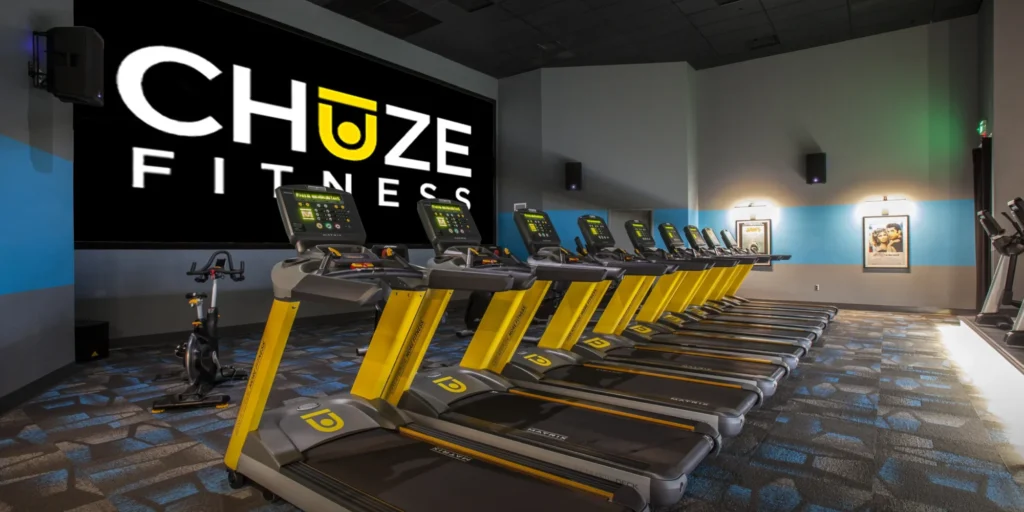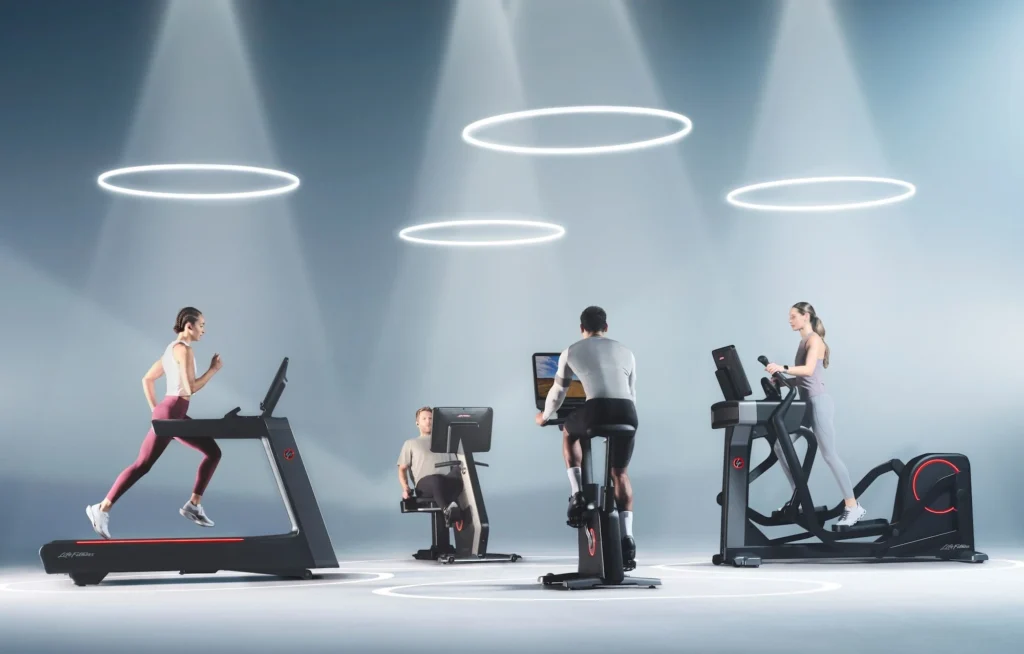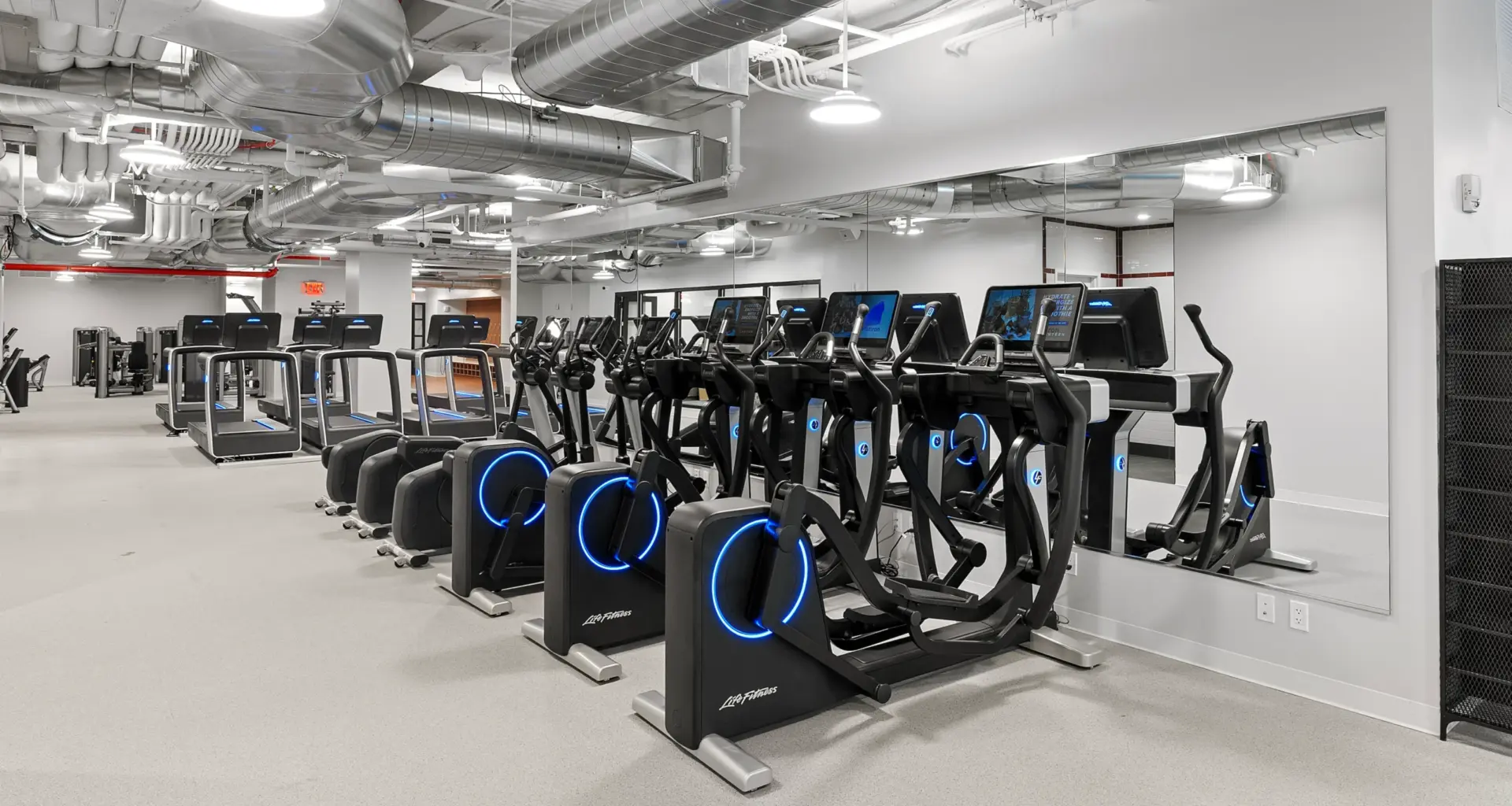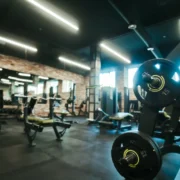As fitness facilities turn away from cardio machines in favor of strength and open floor plans, what does the future hold for treadmills, ellipticals and more?
No matter your pace, you might be a step or two behind everyone else in the gym if you’re on a treadmill, bike or stairmaster.
Even with a post-pandemic boom in run clubs, cardio is no longer fitness’ most sought-after training modality. While the heart-pumping, sweat-summing exercise format will always have a place in gym culture, in the past handful of years, it’s fallen second to strength training.
Widely recognized as a necessary complement to GLP-1 usage, which is booming in its own right, strength training has no shortage of allies in the fitness and wellness world. There’s been an influx of new information tying it to long-term health, which remains a priority for individuals post-pandemic. The uptick in influencer culture has elevated strength as well.
With all this backing, even the most entrenched cardio junkies will tell you the strength surge is real.
However, cardio-specific and general fitness brands aren’t throwing in the towel on the modality. If anything, they’re applying a more focused, strategic concentration.
To paint this picture, Athletech News spoke with C-suite executives and experts from the world’s top cardio suppliers and fitness operators to get their takes on the future of the modality and see how they’re preparing to usher in a new age of cardio.
Chuze Fitness Leans Into Cardio-Entertainment
Taking in what’s on the big screen and getting a sweat in are often thought of as habits that contradict. However, Chuze Fitness, a popular high-value, low-price (HVLP) gym chain now spanning 50+ locations, believes both can coexist under one roof.
With the launch of its Stockton, California, location this spring, the brand now has 44 locations with Chuze Cinema cardio rooms. These areas feature full-sized movie screens and theater-like sound to bridge entertainment with fitness.
“The idea is to flip the script: instead of counting down the minutes of your workout, you’re drawn into the movie,” said Ani Oksayan, vice president of fitness for Chuze. “It makes cardio something people actually look forward to, rather than something they just have to get through.”
 credit: Chuze Fitness
credit: Chuze Fitness
Oksayan argues that finding creative, engaging solutions is the key to keeping cardio relevant.
“Creativity is definitely part of the answer, but it has to be purposeful,” she said. “Cardio only stays relevant when innovation actually solves problems for members and creates real results for us as operators. If an idea doesn’t drive engagement, satisfaction or retention, it ends up feeling more like a gimmick than a solution.”
Signs thus far indicate that Chuze Fitness has struck that balance.
“What we’ve noticed is that people who might normally cut their cardio short, or avoid it altogether, end up staying longer and coming back more often because it feels less like exercise and more like entertainment,” Oksayan said.
Others taking this approach are finding success as well. Brands like Gold’s Gym, EoS Fitness and 10 Fitness all have their own versions of cinema cardio rooms in select locations. According to 10 Fitness, 30% of its new members at the time signed up specifically for the cinema cardio experience.
Life Fitness Pairs Looks & Innovation
Chuze isn’t the only one focusing on visuals. When fitness equipment giant Life Fitness / Hammer Strength launched its Symbio line in late 2023, the brand covered all the cardio basics, including treadmills, cross-trainers, upright and recumbent bikes. It also covered the advanced, including adaptive flex deck technology for customized running surfaces, on-demand workouts and personalization options.
However, Symbio really separates itself from typical cardio equipment with its design. With customizable finishes, organic curves and minimalist digital interfaces, the suite gives any gym housing it a sleek and sophisticated look. The machines also feature a Smart Lighting system, which allows facilities to customize their product’s appearance with 16 different colors and three brightness levels to add another level of visual appeal.
 Symbio line (credit: Life Fitness / Hammer Strength)
Symbio line (credit: Life Fitness / Hammer Strength)
Life Fitness has already started winning back consumers with successful installations at Chelsea Piers Fitness’ West Manhattan location and the Hyatt Regency in Downtown Chicago.
Derek Hansen, Life Fitness’ thought leader and expert in running, also expects to see cardio get a natural lift from the strength training boom.
Working with high-performance athletes and general exercisers alike, he’s noticed the imbalance between strength and cardio training, he told ATN. Hansen believes that disparity could result in an increase in injuries stemming from diminished cardiovascular endurance, decreased circulatory efficiency and reduced capacity to recover from bouts of exercise, meaning more people will turn back to cardio.
“In the case of the Symbio Runner, I have started to look at the differences in running economy and blood flow efficiency with different surface firmness settings,” Hansen said. “This information could be extremely helpful in the evaluation of different exercise protocols and surface settings for beginners, advanced athletes or individuals undergoing rehab following a muscle or joint injury.”
Xpriential Drives Category Innovation
Xperiential, a fit tech startup from New Jersey, is also doing its part to spur a cardio renaissance with an intuitive take on the modality’s most rudimentary piece of equipment — the treadmill.
By combining cutting-edge technology and forward-thinking mechanics, Xperiential’s treadmill simulates real-world running exercise like few other innovations can. Unlike standard treadmills, which pivot from the rear, Xperiential’s machine does so from the middle, which more accurately replicates the feeling of running on an outdoor terrain. It also features a display screen to present users with views such as natural environments or marathon tracks.
The machine also gamifies its user experience with a video game mode. Thanks to a skeletal tracking camera that syncs with the monitor, users can storm castles, make rescues on the moon or enjoy a Mario Kart-like experience from anywhere. The camera also allows users to adjust speed with hand gestures.
See Also
 credit: Xpriential
credit: Xpriential
With these expanded offerings, Xperiential hopes to attract those outside the typical fitness enthusiast demographic, including individuals who may not actively seek out fitness experiences.
“There’s been very little innovation in the cardiovascular training equipment category. Usage is down as strength training has been gaining in popularity,” said Jeff McManus, Xpriential’s chief commercial officer. “There remains a big, underserved population that operators should and can be re-focused on: the ready-to-be-fit crowd of varying ages. Xpriential is just the right tool to attract and retain them.”
Gyms already using the treadmill include Powerhouse Gym, Fitness Factory and The Edge Fitness Clubs. McManus added that in one of the latter’s New Jersey locations, the excitement behind the treadmill even brought in visitors from Connecticut specifically looking to give it a try.
Space Allocation Is Important, Too
Reviving cardio isn’t just about manufacturing more innovative, captivating equipment, but also making machines that integrate into gyms with ease. That’s been a focus for VersaClimber, a California-based maker of vertical climbing machines.
“The biggest challenge we hear is that power and space are at a premium — especially as gyms shift away from large cardio floors and more towards strength and functional training,” said Jim Siegrist, chief revenue officer at VersaClimber. “Treadmills and other traditional machines just aren’t practical in these areas.”
 credit: VersaClimber
credit: VersaClimber
With its vertical nature, VersaClimbers take up a fraction of the space that traditional machines would on a floor. Battery-powered options also make them convenient to move. With a stackable base, up to 16 machines can fit in a 21’ by 4’ area, making storage simple.
As operators question the long-term value of cardio machines amid the growing consumer focus on strength training, equipment like the VersaClimber enables them to better support both training styles.
Siegrist cited an example where The Club Company, a chain of high-end golf clubs, wanted to elevate its fitness offerings and sought to convert a shipping container into a functional training space. VersaClimbers were like a pliable puzzle piece to their jagged situation.
“With limited room, power availability, traditional cardio options weren’t practical — but the VersaClimber fit seamlessly alongside other functional tools like TRX and YBell, giving members a complete, space-efficient training experience,” said Siegrist. “The feedback has been overwhelmingly positive.”
A version of this article originally appeared in ATN’s report, “Fitness Center Reimagined: The Evolution of Gyms, Wellness Tourism & Real Estate,” which explores how gyms, health clubs, hospitality brands and boutique fitness operators are reshaping their brick-and-mortar offerings to meet shifting member expectations and lifestyle demands. Download the free report.


